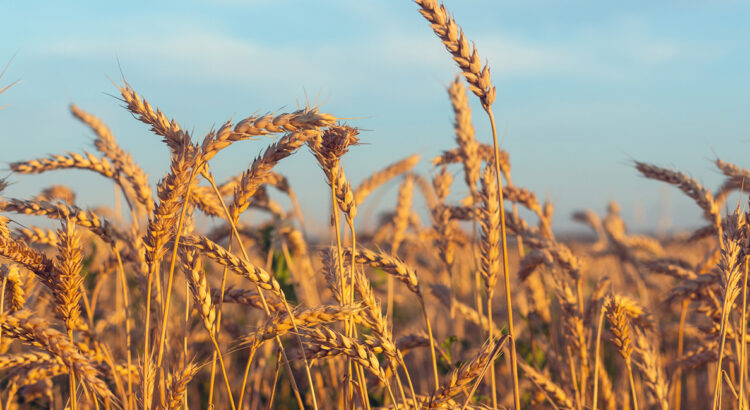Bread wheat, which is produced in large quantities, is used for making leavened, flat and steamed bread, biscuits, cakes and fermented alcoholic beverages such as beer, vodka and ethanol.
Durum wheat is used for biscuits, pasta and couscous.
Wheat grain contains carbohydrates (69%), protein (14%), calcium (43%), niacin (4,6%), fat (2,2%), thiamin (0,57%) and riboflavin (0,12%).
Parts of the plant
Wheat is an annual grass made up of roots, stems with tillers, leaves, inflorescence and seeds.
Roots
The wheat plant has two types of roots: seminal and adventitious. During germination, four to five lateral seminal roots emerge. This root system grows up to 2m in depth and supports the plant until the adventitious roots appear.
Adventitious roots are usually visible when the fourth leaf emerges and tillering starts. These roots are thicker than seminals and emerge more or less horizontally, developing on the lower three to seven nodes.
The roots that grow on the upper nodes above the soil surface appear as short pegs coming out of the stem and may not penetrate the soil.
Stem
The stem of a wheat plant varies in height depending on the cultivar. Four to seven internodes of the shoot elongate to form the inflorescence. The stem is cylindrical and solid, with nodes and internodes.
The internode elongation is complete by the time of anthesis (the period during which a flower is fully open and functional).
The strength of the stem is important for carrying an ear, which otherwise may be susceptible to lodging. Tillers grow from the stem just below the soil surface. The number in a plant ranges from five to 21, depending on the cultivar, plant population, sowing dates and mineral nutrition.
Leaf
The leaf blade is long, narrow, thin and tapered towards the tip. The sheath wraps around the stem. On the sides of the joint is a thin membranous structure called an auricle. The base of the leaf on the stem is thickened to form a hard knot.
Inflorescence (head)
Often called an ear or spike, the inflorescence comprises a rachis, spikelet, floret, glumes, palea and caryopsis. The rachis, the zig-zag stalk where spikelets are attached, is situated at the distal end of the stem.
The largest and most advanced spikelets are found in the middle part of the ear. Under unfavourable growing conditions, the lower-most spikelet and those at the top of the ear may be poorly developed and without fertile florets.
Each spikelet bears two glumes and two to four fertile florets. The floret has two sheathing structures, namely an outer lemma and inner palea, which enclose two lodicules, three stamens and a carpel.
The stamen is made up of a filament and a yellow anther, which contains numerous pollen grains. The carpel contains an ovary that in turn has a single ovule. Within an ovule are the embryo sacs holding two egg nuclei, antipodal cells and polar nuclei.
As it approaches anthesis, the inflorescence is completely formed and the pollen grains and carpel are fully developed. After anthesis, the florets open, pollen is released, the carpels are pollinated, and the seed develop from the union of pollen grains and egg nuclei.
About 86% of the flowers bloom in daylight at a temperature of between 13°C to 25°C.
Wheat is self-pollinated, although cross-pollination occurs in 1% to 4% of cases.
Blooming begins in the spikelets slightly below the middle of the spike and proceeds both upwards and downwards. Within a spikelet, the upper flowers boom last. A wheat spikelet normally completes blooming within two to three days after the first anthers appear.
Seed
The dorsal side is smoothly rounded, while the ventral side has a deep groove. The embryo is situated at the point of attachment of the spikelet axis and the distal end has fine hairs.
The embryo is made up of the scutellum, plumule and radicle. The scutellum is the region that secretes some of the enzymes involved in germination and absorbs the soluble sugars from the breakdown of starch in the endosperm. Surrounding the endosperm is a metabolically active layer of cells called the aleurone layer.
Source: Morojele, E and Burger, E. 2009. Wheat Production Guidelines for Small-Scale Farmers. ARC-Small Grain Institute, Farmer’s Weekly.
[ssba-buttons]
Very useful message
Howdy! Quick question that’s entirely off topic. Do you know how to make your
site mobile friendly? My site looks weird when viewing from my apple iphone.
I’m trying to find a theme or plugin that might be able to fix this issue.
If you have any recommendations, please share. Cheers!